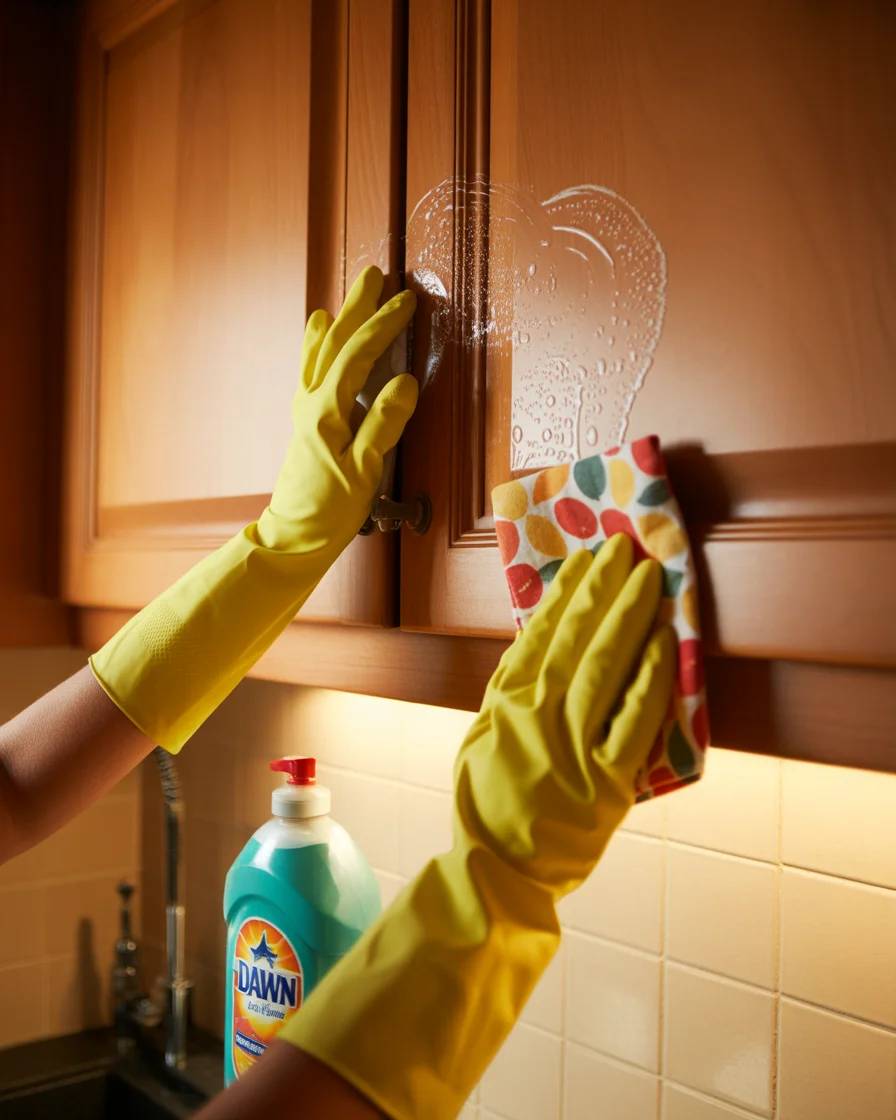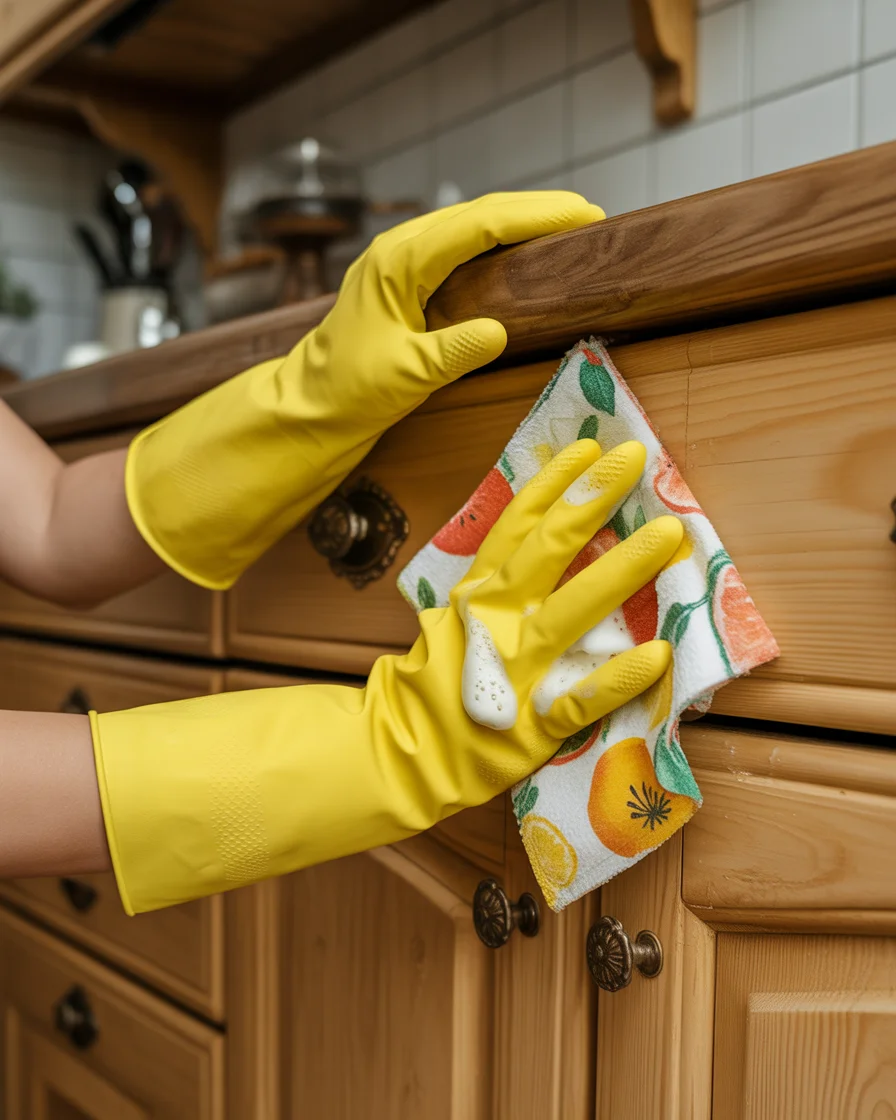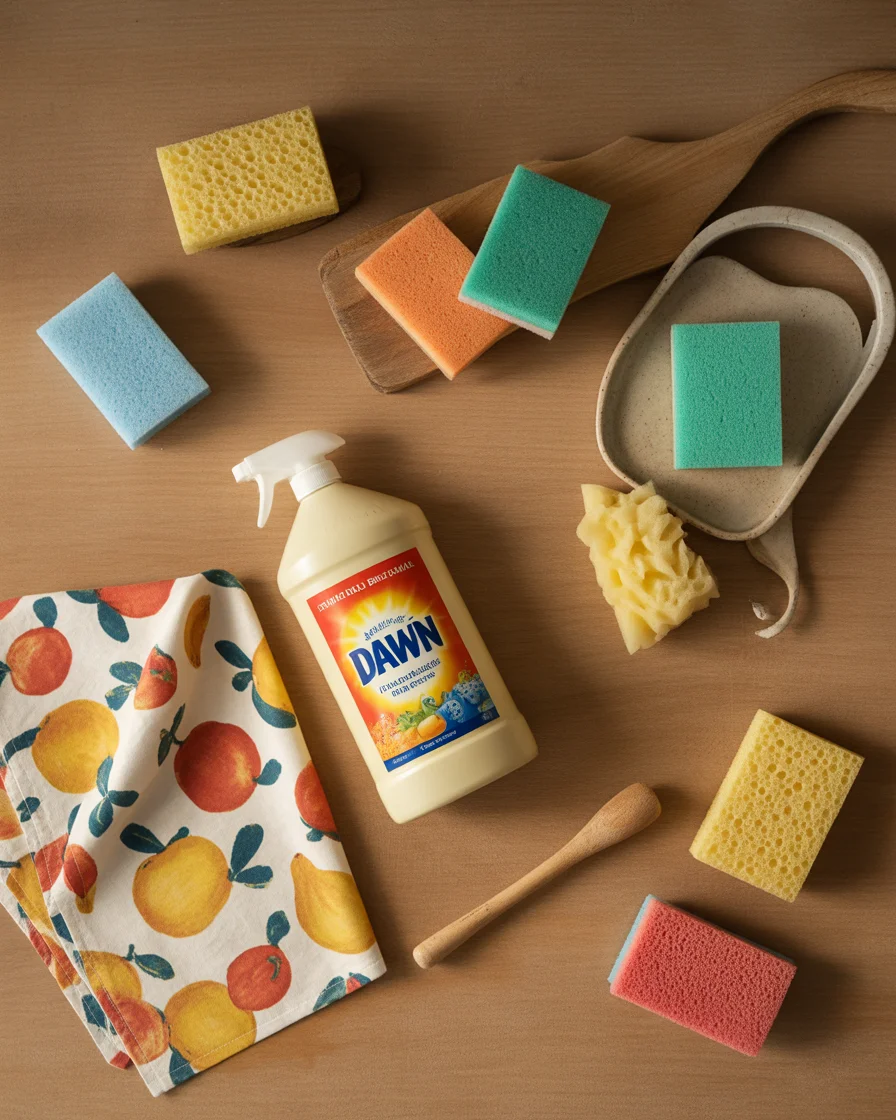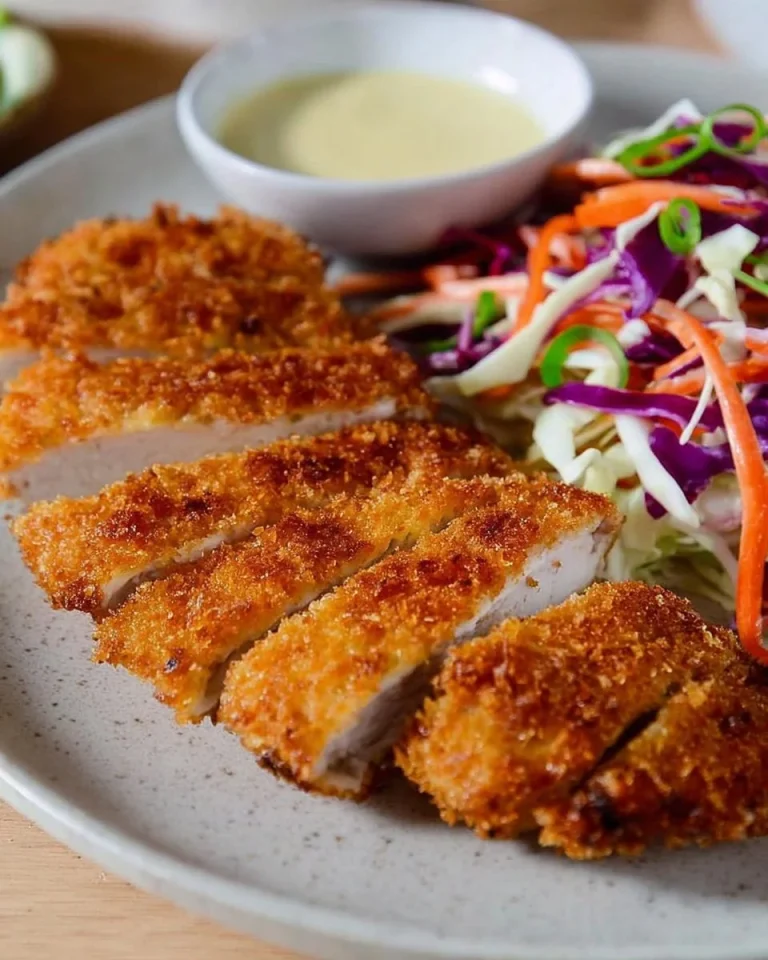Say Goodbye to Grease: Effortless Kitchen Cabinet Cleaning Hack You Need to Try
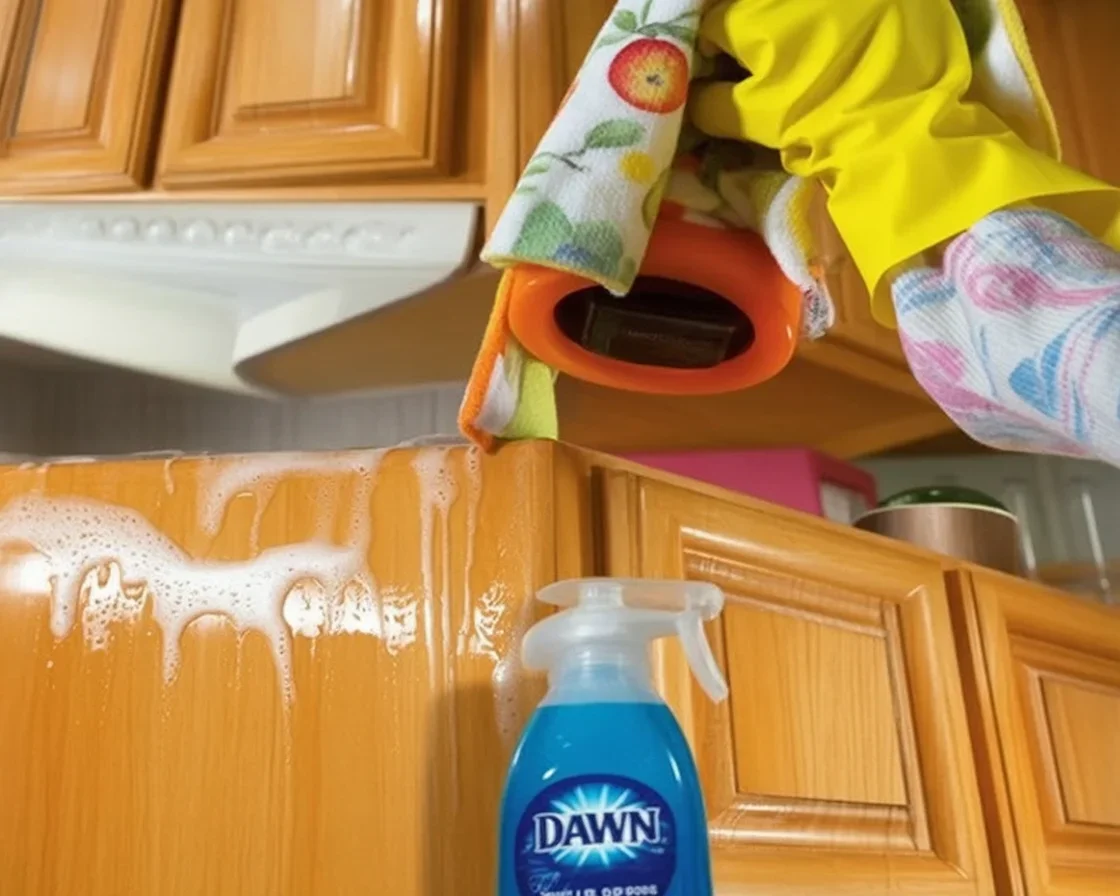
- The Best Way to Clean Kitchen Cabinets
- How I Tested the Methods to Clean My Greasy Wooden Cabinets
- Kitchen Cabinet Cleaning Method: Dawn Dish Soap
- Smart Tips to Prevent Grease Buildup
- 8 Cleaning Hacks That Will Make Your Kitchen Cabinets Look Brand New
- Common Questions
- Give Your Kitchen Cabinets That Fresh Start!
So, here’s the deal. That kitchen cabinet cleaning hack your aunt keeps yapping about? Yeah, I tried it. I know the pain of scrubbing away at sticky, grimy cabinet doors only to get exhausted and, let’s be honest, kinda discouraged. If your kitchen’s seen more greasy spills than a Texas BBQ joint, you’ll want to stay with me here. And if DIY cleaning makes your heart skip a beat, you gotta check out this frugal guide to DIY cleaning solutions before we get rolling.
The Best Way to Clean Kitchen Cabinets
We all want shortcuts that actually deliver, right? Because, c’mon, who wants to spend their whole Saturday attacking mystery splatters? The kitchen cabinet cleaning hack I stumbled across—after waaay too many failed “Pinterest-perfect” solutions, let’s be real—doesn’t require fancy sprays or a science degree. Nope.
The magic is in this combo: gentle dish soap, warm water, and a microfiber cloth. What’s wild is how something so simple works even on wooden cabinets. No streaks, no drying out the wood, just… lovely, non-sticky doors. Do it right and you won’t be embarrassed next time in-laws pop by unannounced.
I switched to this method a month back, and my cabinet doors legit look new. My mom thought I’d bought replacements. Nope. Just clean, baby!
How I Tested the Methods to Clean My Greasy Wooden Cabinets
I’ll spill the beans—my kitchen gets abused. Frying, boiling, bacon experiments, fudge fails, all of it. My wooden cabinets used to look like they survived a tornado. So, I lined up every hack: baking soda paste, vinegar sprays, overpriced specialty cleaners. Was my kitchen a science lab for a day? Kinda. Some ideas, like vinegar, left stuff sticky or dull. Baking soda scratched a bit (ugh), so that was out. The winner? Plain old dish soap. Not even kidding.
I didn’t even wear gloves, because I need to feel the results, ya know? It cut grease without damaging the finish. I wiped a second time with clean water, and that’s when I knew. I had to tell someone. Please, just try it before you go buy those fancy bottles.
Kitchen Cabinet Cleaning Method: Dawn Dish Soap
Let’s get into the nitty-gritty for folks who want step-by-step. Grab your Dawn Dish Soap (trust me, blue bottle is king). Here’s the drill: add a big squirt to a bowl of warm (not hot, don’t warp the doors) water. Swish around. Dip the microfiber cloth in, squeeze out excess, and wipe cabinets. Tackle one door at a time, chasing those icky grease patches like a kitchen ninja.
After the soapy wipe down, rinse the cloth with clean water, run back over everything, and towel dry real quick. No sticky residue, no soapy gunk streaks. Your cabinets? Stunning. I’m serious, your kitchen will look five-star restaurant-level tidy.
Smart Tips to Prevent Grease Buildup

If you want to keep things from getting outta hand, you’ve gotta be a tad proactive. I learned this the messy way. Wipe up any splatter the same day. Steam from cooking? Crack open a window—just a smidge to save your finish. Install a little shelf liner above your stove for extra splatter patrol.
Don’t skip regular dusting, either. Grease loves to stick to dust. Every week or so, give the cabinets a light wipe. I know, I know, sounds like a lot, but it’s way less painful than full-on scrubbing once a year. Don’t say I didn’t warn ya!
8 Cleaning Hacks That Will Make Your Kitchen Cabinets Look Brand New
Look, maybe you’re stubborn or wanna try all the tricks. Honestly—I was skeptical at first too. Can’t lie! Here are some top cleaning hacks:
- Mix baking soda and water for stubborn spots, but test in a hidden spot first.
- Use an old toothbrush for corners and grooves.
- A little vinegar diluted in water works on glass cabinet inserts.
- Lemon oil on a cloth adds shine but don’t go crazy because it’s slippery.
If these don’t do the trick, circle back to dish soap—funny how the classics win. Also, if you’re a cleanup fanatic like me, keep your cabinet doors closed during heavy-duty cooking (learned that after one wild chili splatter fest).
For even more life-saving kitchen tips, check this kitchen sink casserole guide if you’re multitasking food and cleaning duties!
Common Questions
Q: Is it safe to use vinegar on all wood cabinets?
A: Don’t do it. Vinegar can strip finish and cause dullness. Stick with gentle soap unless you know your finish is vinegar-proof.
Q: How often should I deep clean my cabinets?
A: Once a month is solid if you’ve got a messy household. Otherwise, a brief wipe weekly works.
Q: Are commercial degreasers better?
A: Honestly, dish soap works just as well for normal build-up. Save your cash. Specialty cleaners might be handy for ancient, thick grease though.
Q: Can I use regular rags instead of microfiber?
A: Sure, but microfiber grabs the grease better and doesn’t scratch. Treat yourself to a cheap pack.
Q: What about painted cabinets?
A: Patch test first, but gentle soap is usually safe. Avoid scrubbing too hard or paint might chip.
Give Your Kitchen Cabinets That Fresh Start!
So, would I bet my favorite spatula on this cleaning hack? YUP. The kitchen cabinet cleaning hack (using good ol’ dish soap and elbow grease) is foolproof, fast, and won’t wreck your wood. Seriously, don’t overthink — almost every big cleaning expert agrees, like the Best Way to Clean Greasy Kitchen Cabinets from The Kitchn, or those epic 8 cleaning hacks at Specialty Kitchen. Don’t live with sticky grime. Try it this week and just wait for someone to pop by and ask what’s new in your kitchen. Now, if only my stove cleaned itself, right?

Kitchen Cabinet Cleaning
Ingredients
Method
- Add a big squirt of Dawn Dish Soap to a bowl of warm water and swish around.
- Dip the microfiber cloth in the soapy water, squeezing out the excess.
- Wipe down cabinets one door at a time, focusing on grease patches.
- After cleaning, rinse the microfiber cloth with clean water and wipe the cabinets again.
- Towel dry quickly to avoid streaks or sticky residues.
- Wipe up splatter immediately after cooking.
- Dust cabinets weekly to prevent grease buildup.
- Avoid using vinegar on wooden cabinets as it can dull the finish.

